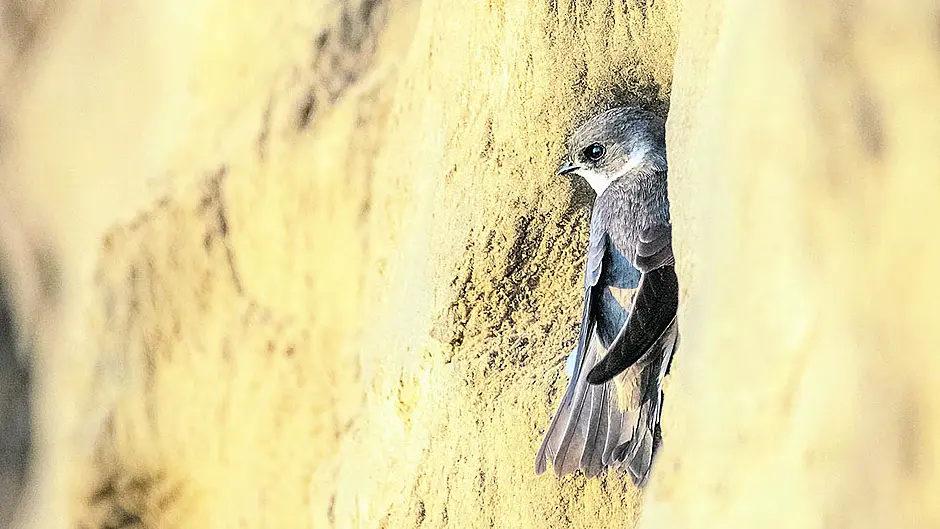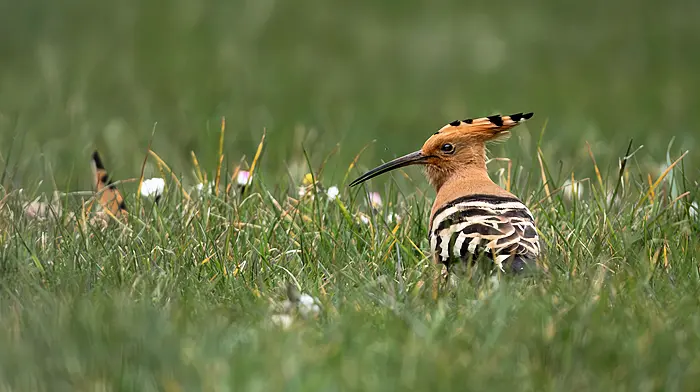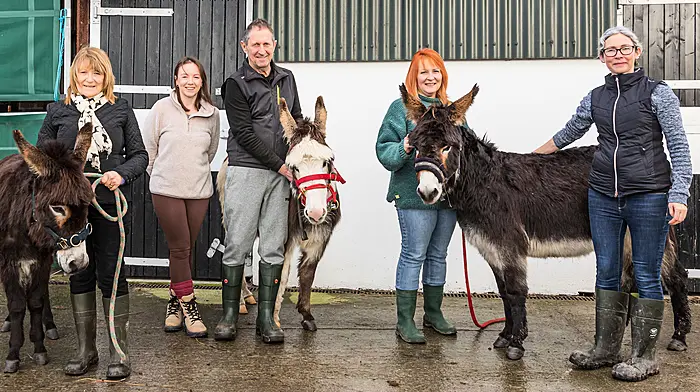FINALLY there is a feeling of spring in the air and the avian world is already busy preparing for the upcoming summer breeding season. Soon we will be seeing some of the earliest migrants arriving on our shores too, and they are very welcome as harbingers of the long summer days ahead.
The peninsulas of West Cork are ideal locations for spotting these ‘early birds’ and from here on we can expect to start seeing species like wheatear and sand martin along our coast. But these birds are present in these locations throughout the summer too and are just fascinating to watch.
Sand martins are the somewhat ‘dowdy cousins’ of the swallow family, lacking the plumage glamour of their swallow and house martin cousins. Nonetheless, they are fascinating creatures and I’ve spent many, many hours happily watching them swooping along the cliffs at Toe Head.
Like the swallow and house martin, the sand martin feeds on flying insects and in the cold winter months these insects are not available in Ireland. So the sand martin overwinters in Africa, just south of the Sahara.
Sand martins are social birds; breeding, feeding and even migrating communally. Their migration consists of short, daylight flights across land masses rather than long marathon migration journeys.
Irish birds make their way slowly up the western side of Africa and France from their sub-Saharan winter grounds. This strategy brings them on the shortest route across the ever-expanding dessert while maximising feeding opportunities. However, this is still the riskiest segment of the journey especially in years of drought when they can suffer heavy losses.
These are among the first migrants to arrive in Ireland, as early as the beginning of March in some years. The initial arrivals are the adults of the previous year who may arrive here 3 or 4 weeks ahead of the young birds, and certainly well ahead of the swallows and house martins.
These early birds generally gather in small flocks over water, feeding on the insects that swarm there. Soon, however, they return to their old breeding sites where they nest communally in vertical sand banks in which they excavate long tunnels. These colonies are situated in river banks where sandy soil predominates, or in sandy sea cliffs like Toe Head.
As well as these naturally occurring sites, sand martins also exploit some man-made locations, including sand or gravel pits. But there are also records of sand martins breeding in other less obvious locations too, including heaps of sawdust.
The nest chamber, situated at the end of a tunnel burrowed into the sand, is lined with fine grasses and feathers. Sand martins have been observed playing ‘feather games’ when gathering this material, competing for airborne feathers on the wing.
The clutch generally consists of five pure white eggs which hatch in about three weeks and the young fledge some 18-20 days later. In a good year, the earliest nestlings are fledged by the beginning of June. In a well-populated colony, nesting is continuous until mid-August. The most successful pairs will have raised three broods by that stage.
The young fledgelings are garrulous and boisterous and a pure joy to observe. They join together in large groups as they move around the area, playing the ‘feather game’ and practising their flying skills. I’ve spent many happy hours watching these youngsters play games of ‘dare’ while swooping up and over the Toe Head cliffs.
Sand martin survival on migration is severely affected by Saharan droughts. A prolonged drought in 1969 reduced their numbers by up to two thirds, and long dry periods in the 1990s also had dire consequences. And as the size of the desert continues to increase, the effort that these small birds must make to cross it increases proportionally. However, the sand martin has managed to recover from huge crashes in the past so hopefully we’ll get to continue watching these ‘characters’ along the coast of West Cork for many more generations to come.









